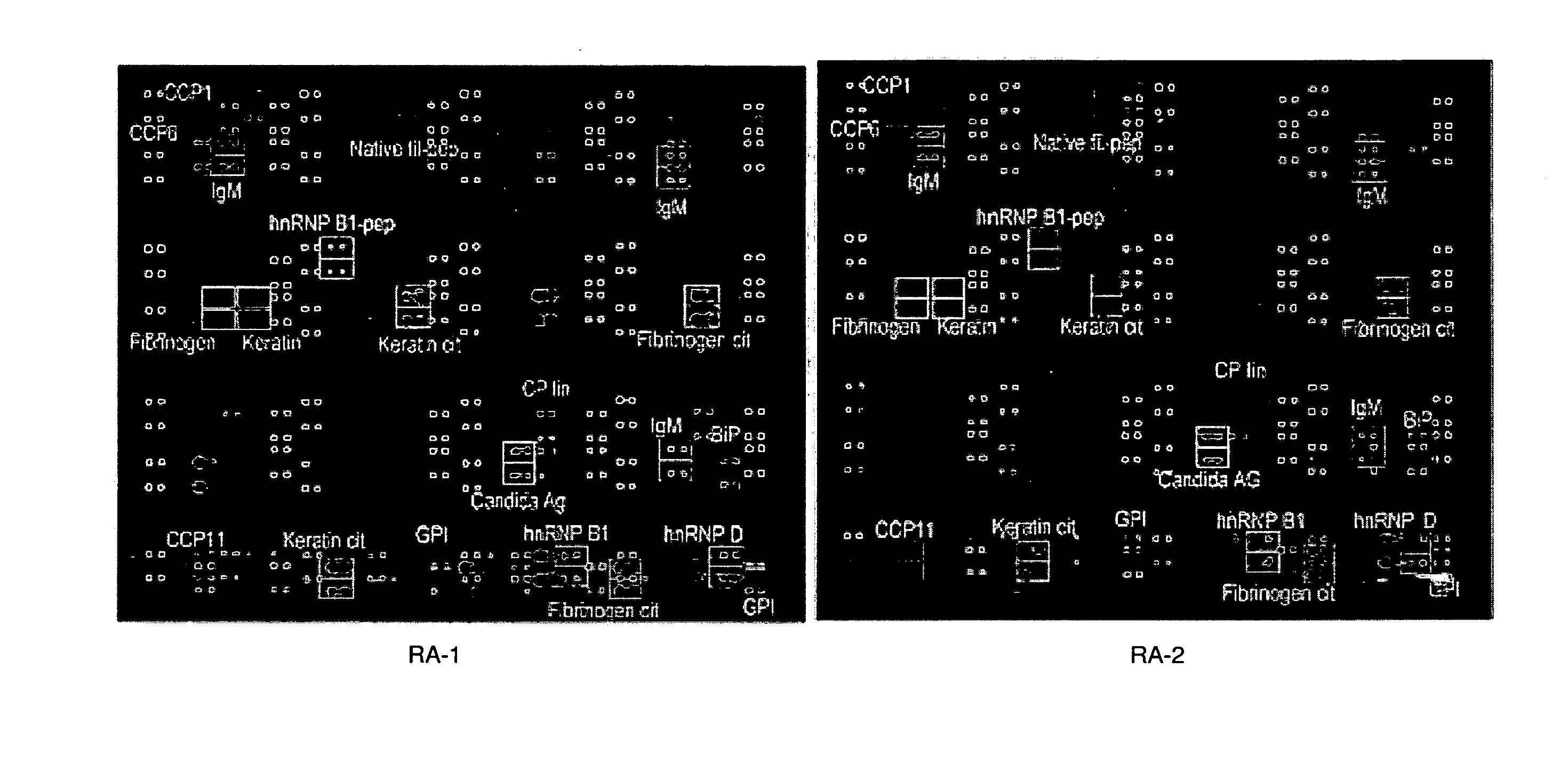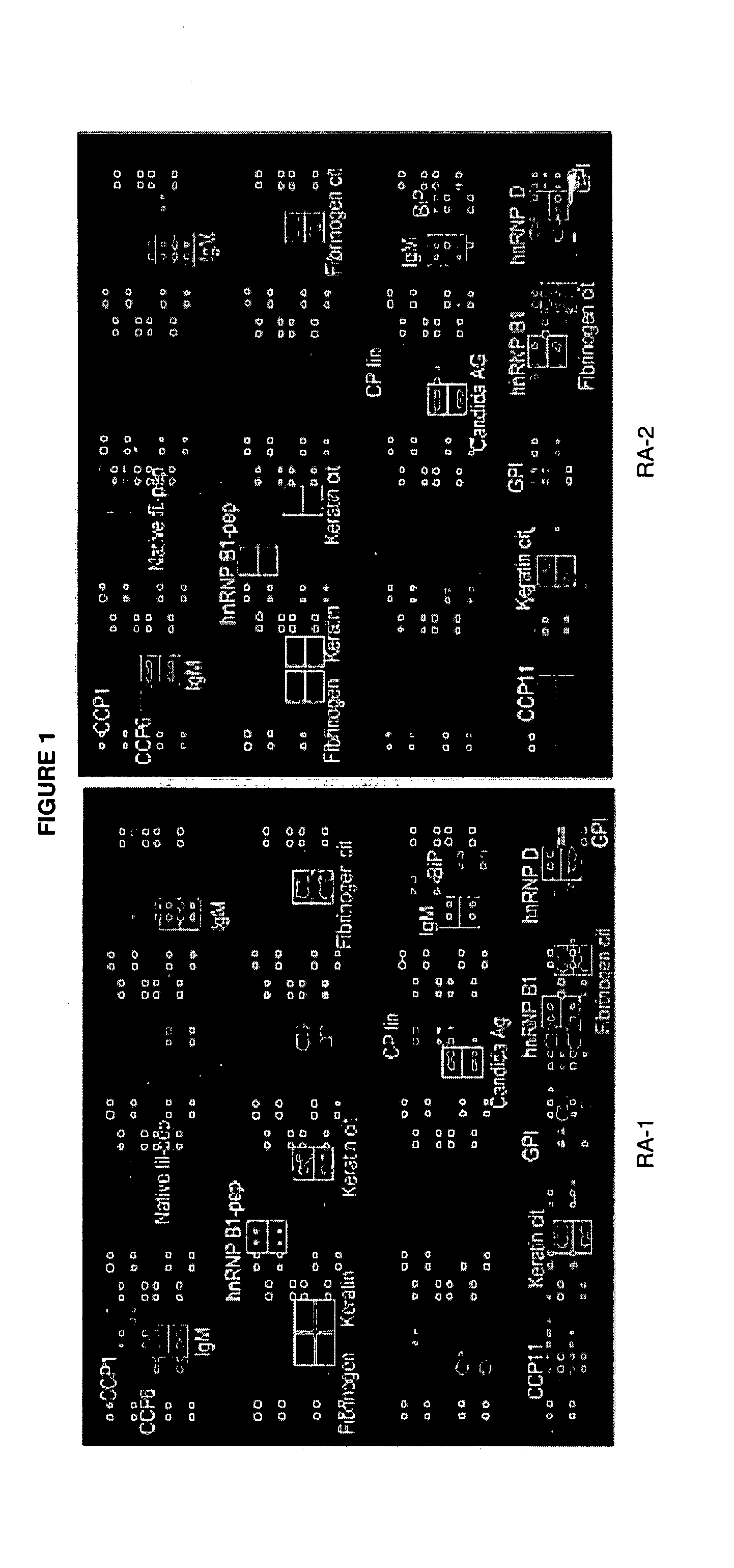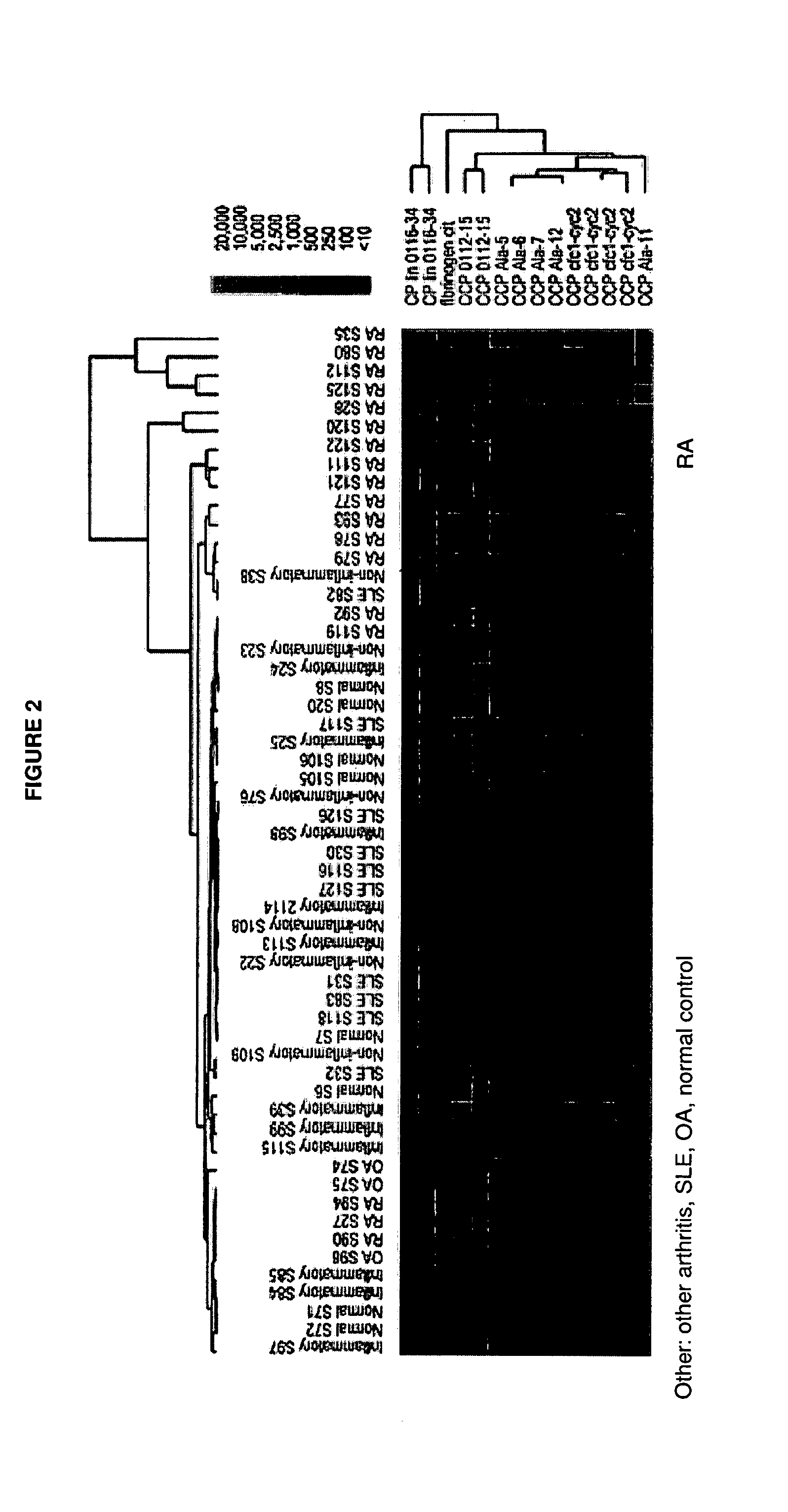Antibody profiling for determination of patient responsiveness
a patient responsiveness and antibody technology, applied in the field of antibody profiling for patient responsiveness determination, can solve the problems of variability of patient responses, interference with t cell signaling pathways, and clinicians may need to prescribe sequential expensive and time-consuming therapies, so as to improve care and high the probability of responsiveness
- Summary
- Abstract
- Description
- Claims
- Application Information
AI Technical Summary
Benefits of technology
Problems solved by technology
Method used
Image
Examples
example 1
Antigen Microarray Profiling of Autoantibodies and Bead Array Profiling of Cytokines Identifies “High-Inflammatory” Severe Arthritis and “Low-Inflammatory” Mild Arthritis Subtypes of Rheumatoid Arthritis
[0170] Rheumatoid arthritis (RA) is a polysynovitis of presumed autoimmune etiology that affects 0.6 to 1% of the population. Despite decades of research, the autoantigen targets and the molecular basis of RA remain poorly understood. The observed heterogeneity of disease manifestations, clinical course, and treatment responses suggests that unappreciated subtypes of RA exist on the molecular level. For example, a subpopulation of RA patients develops autoantibodies against citrullinated epitopes such as those represented by cyclic citrullinated peptide (CCP), which is associated with erosive disease. Another example is the heterogeneity in responsiveness to tumor necrosis factor alpha antagonist therapy. The advent of proteomics technologies has enabled large-scale analysis of prot...
example 2
Methods for Predicting Response to Anti-TNF Therapy: Blood Autoantibody and Cytokine Profiles in Pre-Treatment Samples Predict Etanercept Responder and Non-Responder Rheumatoid Arthritis Patient Subgroups
[0211] Rheumatoid arthritis is an inflammatory synovitis affecting 0.6%-1% of the World population. Treatment of RA with the anti-TNF alpha antagonists etanercept, infliximab and adalimumab produces significant clinical benefit in approximately ⅓ of patients, mild clinical benefit in ⅓ and little to no clinical benefit in ⅓ of patients based on American College of Rheumatology (ACR) response criteria (Genovese et al, 2002, Arthritis and Rheumatism, 46:1443-50). To date, in routine clinical practice the responsiveness of individual patients to anti-TNF alpha therapy is determined via an empiric therapeutic trial with etanercept, infliximab or adalimumab for approximately 1-12 months to determine if the patient experiences significant clinical improvement based on patient self-assess...
example 3
Use of Multiple Technology Platforms, RA Patient Sample Sets and Statistical Analysis Algorithms to Identify Autoantibody Specificity Profiles Specific for Etanercept Responders Versus Non-Responders
[0221] Example 2 illustrates that the analysis of autoantibody and cytokine expression patterns in blood using a variety of proteomics technologies and biostatistics tools can be complementary and may facilitate discovery of multi-molecule biosignatures of lesser complexity, while predicting clinical outcomes such as response to therapy with accuracy comparable to larger-scale signatures. The more variables that are used, the higher the classification rate, but also the tendency to overfit the data. Thus, the classification rate in these examples can represent an overestimation of the prediction rate in an independent second cohort. However, combination of markers from different assay platforms can demonstrate superior performance as compared with combination of markers from just one as...
PUM
 Login to View More
Login to View More Abstract
Description
Claims
Application Information
 Login to View More
Login to View More - R&D
- Intellectual Property
- Life Sciences
- Materials
- Tech Scout
- Unparalleled Data Quality
- Higher Quality Content
- 60% Fewer Hallucinations
Browse by: Latest US Patents, China's latest patents, Technical Efficacy Thesaurus, Application Domain, Technology Topic, Popular Technical Reports.
© 2025 PatSnap. All rights reserved.Legal|Privacy policy|Modern Slavery Act Transparency Statement|Sitemap|About US| Contact US: help@patsnap.com



